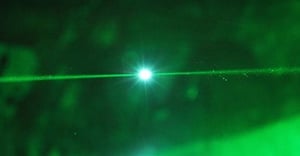Researchers from the Ciencias Fisicas Institute of the Universidad Autonoma de Maexico (UNAM), in Cuernavaca, have discovered that the use of sound waves to “levitate” droplets of water in air makes it possible to accurately identify possible toxic substances, like lead or mercury, found in water.
The results of the study have been published in the scientific journal Optics Letters. Of course, there are other systems to check water purity, but none of them make it possible to instantly monitor heavy metals, all together, in real time. In order to do so, it is necessary to send water samples to specialized laboratories, often with long waiting times. “Our new technique, on the other hand, makes analysis more simple (compared to techniques currently being used, editor’s note) and can be carried out on the spot, by agricultural industries, for example, or by companies specializing in water purification”, says Victor Contreras, of the Institute of Ciencias Fisicas, who coordinated the research group.
But how does this new technique work in more detail? Special sound waves make the droplets detach from the surface of the water, which then evaporate and remain suspended, forming regular spheres. Afterwards a laser ray is used to break up the molecules. This creates a plasma (a highly-ionized gas), which can be measured with a high degree of accuracy using spectroscopy, i.e. through the spectrum of radiation emitted (this technique is called Laser Induced Breakdown Spectroscopy – LIBS).
Researchers showed that in this way it is possible, in just a few minutes, to also measure very low concentrations (up to 0.7 milligrams per liter) of heavy metals, such as cadmium, barium and mercury. LIBS has actually been used for years, but without sound waves, and therefore, without “levitation”. Thus, the water droplets are arranged on a slide and are then treated with the laser. However, this causes irregularities in the distribution of metals and increases the risk of error.

